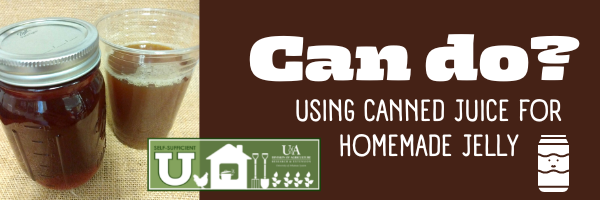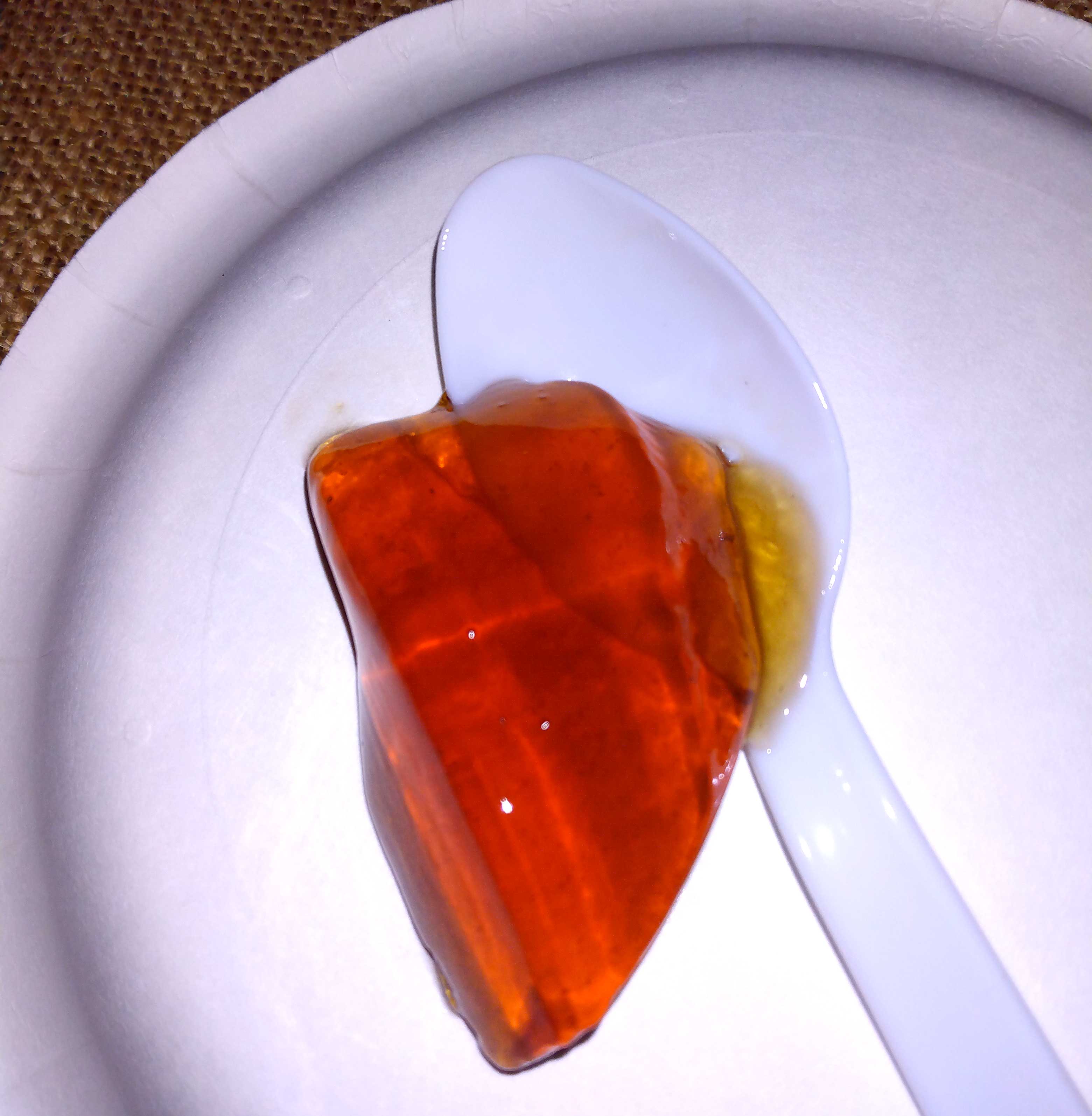Self-Sufficient U Blog
Clark County Extension Service
Amy Simpson, Horticulture
Cindy Ham, 4-H and Ag
JoAnn Vann, Family & Consumer Sciences
Phone: 870-246-2281
Email: clark-arkadelphia@uada.edu
Follow us on
Facebook
Clark County
Cooperative Extension Service
640 S 6th Street Suite B
Arkadelphia, AR 71923

Can you use home-canned juice to make jelly?
JoAnn Vann
Each year before I start putting up garden produce, I go through the previous years canned and frozen goods to see what is left and come up with a utilization plan as I HATE to waste food. Last year’s muscadines were prolific to say the least! I still have 16 quarts of juice that need to be used before the one-year canning mark. So what to do?
Are there safety concerns when using home-canned juice to make jelly?

I knew that there was no safety concern in using the juice, but over the course of the year, the juice color has faded to a pinkish brown so I had doubts that jelly made from it would look appetizing. Staring at so many jars, I decided to give it a whirl! I elected to use powder pectin and followed the cooked grape jelly instructions included in the package. Popping the lid off the first jar, I immediately noticed the sweet aroma of grapes. (what does this tell a person if they smelled something else?? So far so good, I thought.
As the mixture hit the final rolling boil, doubt crept back into my mind as the foam created looked like a coffee with heavy cream- you know the light cocoa brown that is delicious in a foamy latte, but not so much as a jelly. It was too late to stop now so I finished the batch and ladled it into pint jars hopeful, that the end product would be in some way useable.
What's the verdict?
With the last teaspoon in the stockpot, I ventured a taste and was delighted by the full grape flavor homemade muscadine jelly is known for. Then the magic happened! As the jelly cooled, a lovely purplish pink hue with nice clarity began to shine through. A few hours later, I checked again and sure enough- the jelly was setting and the color was indeed attractive! So, can you use home canned juice to make jelly? Absolutely!
Questions on food preservation or about this blog article? Contact me at jvann@uada.edu, 870-246-2281, or check out our Arkansas Extension Food Preservation Page.
Need a great muscadine jelly recipe?
Get Howard County FCS agent Jean Ince's muscadine jelly recipe and tips!